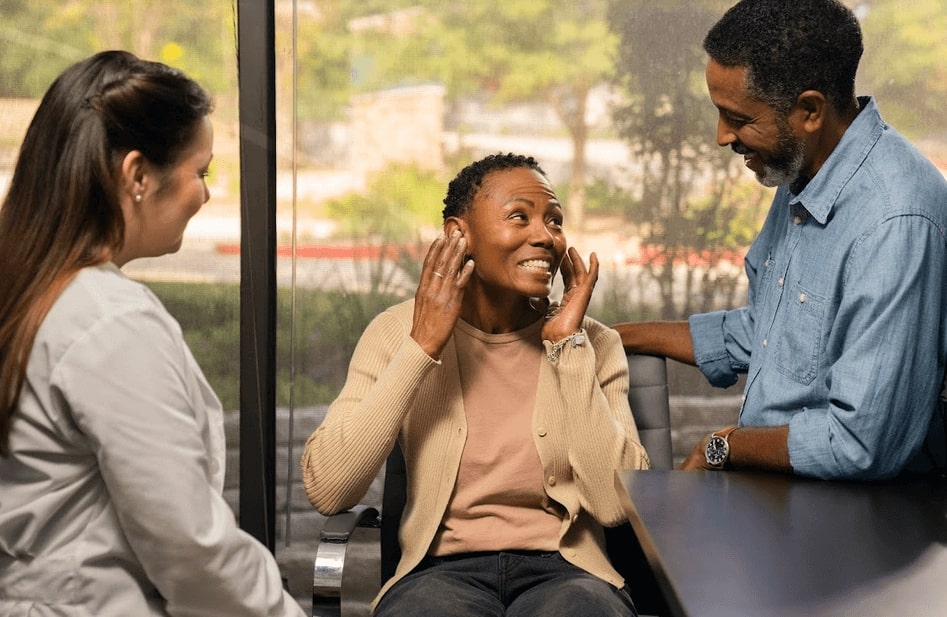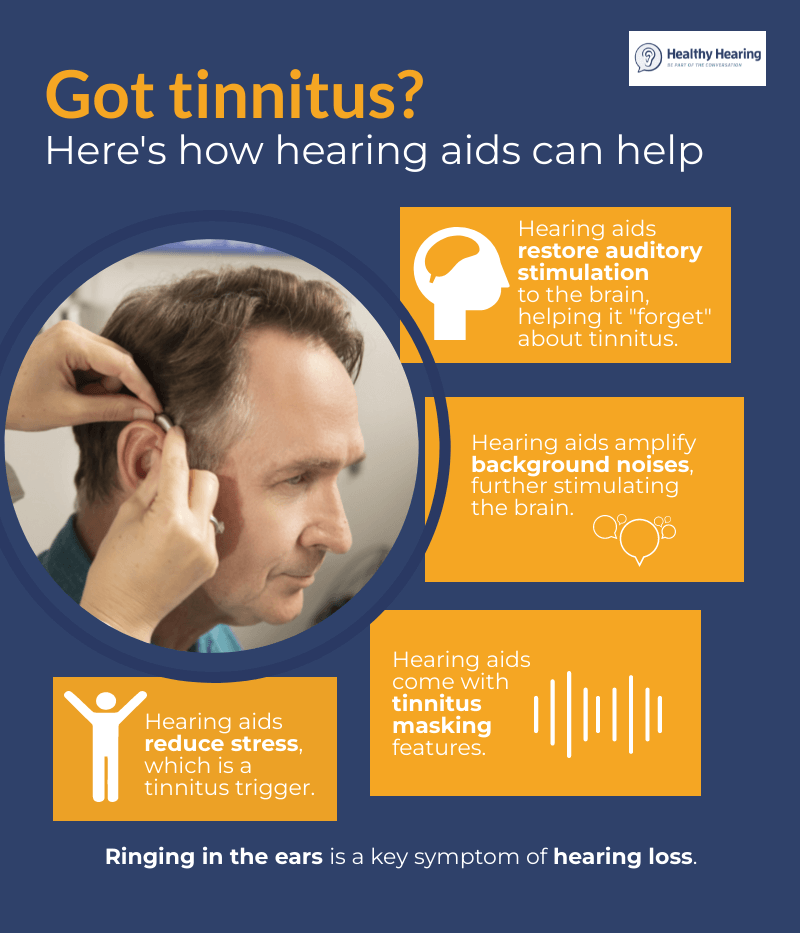|
www.HealthyHearing.com |
Why two hearing aids are better than oneResearch strongly indicates you'll be more satisfied with two hearing aids
Contributed by Joy Victory, managing editor, Healthy Hearing If you're considering getting hearing aids, you likely have lots of questions about the process. One of the most frequent questions we get asked at Healthy Hearing is whether or not two hearing aids are better than one. The answer: Yes, if you have hearing loss in both ears, you almost certainly hear better with two hearing aids. (Not sure if you have bilateral hearing loss? The best way to know is to get a hearing test.) 
realistic sound experience possible. This lingering question probably stems from the old way of doing things: Prior to about the 1980s or so, it was common for people to wear just one hearing aid even if they had hearing loss in both ears. Eventually, though, the science won out, proving with almost absolute certainty that it's better to wear a hearing aid in each ear. Why? Below are a few convincing reasons to equip yourself with a pair of hearing aids—instead of just one. Note: These are not the only benefits, just some of our favorites! 1. Two hearing aids are better for your brainDon't risk 'auditory deprivation'Hearing loss is a type of sensory deprviation. Overtime, your brain will become less effective at decoding the sound around you coming into that ear. Understanding speech—particularly in the presence of noise—gets more difficult even when the sound is loud enough for you to hear it. Hearing healthcare professionals call this auditory deprivation. Wearing two hearing aids means each ear picks up sound and gets the stimulus it needs to stay at peak performance. This is important for everyone but especially in kids who have hearing loss in both ears. Hearing aids in both ears are well-proven to boost learning and language development in children. 2. Far better sound qualityClearer conversations in noisy environmentsOne of the biggest reasons you may be considering getting hearing aids is that, besides not being able hear at normal levels, you find that even if you can hear speech, you struggle to understand it. This is especially true if there is background noise competing. Understanding speech is the foundation of good communication and there's no better reason to seek hearing treatment. Research has shown wearing two hearing aids makes for clearer conversation, making it possible to better understand sound. The study concluded a pronounced improvement in sound quality and clarity and higher speech discrimination test scores for subjects who had two hearing aids compared to those who wore hearing aids in only one ear. 3. You'll better know where a sound is coming fromKnowing what direction a sound is coming from, or sound localization, is something people with normal hearing take for granted. From the time we are born and we learn to turn our head in the direction of our mother's voice, we learn to perfect this skill. Not only is finding the source of sound helpful in everyday life, it can be an important safety consideration. Knowing where those ambulance sirens are in relation to your car helps you know when and where to pull over to allow emergency vehicles to pass. Our two ears work in delicate harmony to make localization easy, and people who have single-sided deafness can attest to having difficulty with this skill. Dr. Francis Kuk writes in the Hearing Review that to improve localization, the first requirement is auditory cues from wearing two hearing aids. 4. Better masking of tinnitus (ringing in the ears)In people who have hearing loss and tinnitus (which is very common), wearing two hearing aids is highly recommended and "extremely beneficial" compared to wearing just one hearing aid, note researchers in the report "Binaural Hearing Aids: The Fitting of Choice for Bilateral Loss Subjects."
More: How hearing aids help tinnitus 5. You won't have to set the volume so highWearing two hearing aids provides "binaural summation." According to the Encyclopedia of Otolaryngology, Head and Neck Surgery, binaural summation is when a listener perceives greater intensity (volume) of sound when both ears are presented with a stimulus at once compared to hearing the stimulus in either ear alone. Having an increased perception of volume from wearing two hearing aids means you'll be able to get more "bang for your buck" in terms of loudness. Neither of your two devices will need to have the power output or be turned up as high as a single device trying to do the work of two. This can help you conserve hearing aid batteries and may even mean you can wear small hearing aids since not as much power is needed. 6. Better long-distance hearing"A person can hear sounds from a further distance with two ears, rather than just one. A voice that’s barely heard at 10 feet with one ear can be heard up to 40 feet with two ears," state the authors of the "Binaural Hearing Aids" report mentioned above. 7. You'll feel less tired and even more relaxedThe same report authors explain that many people who wear hearing aids find that listening and participating in conversation is more enjoyable with two [hearing aids] instead of just one. "This is because they do not have to strain to hear with the better ear. Thus, binaural hearing can help make life more relaxing," the authors wrote. Other things to know about hearing aidsBinaural hearing aids are especially important for asymmetrical hearing lossNot everyone loses hearing in their ears evenly. Many people have what's known as asymmetrical hearing loss, when hearing loss is worse in one ear than the other. To get correct amplification of sound, you must treat both ears with hearing aids, not just one. What about a cochlear implant in one ear and a hearing aid in the other?This is known as bimodal hearing, and yes, this too can be a highly effective solution for hearing loss, particularly if one ear has profound hearing loss and the other is not as severe. When is only one hearing aid the better choice?Some research indicates that for people with cognitive delays or dementia, one hearing aid may work better than two, even if a person has hearing loss in both ears. It's thought that two hearing aids are over-stimulating for the brain and auditory pathways. If you have normal hearing in one ear, and very mild hearing loss in the other, you're probably fine to just wear one hearing aid—just remember to get regular hearing tests to make sure your "good ear" is still hearing well. Benefits of two hearing aids — in depthIf you'd like to read an in-depth clinical summary of why two hearing aids are so important to hearing better, we recommend Binaural Signal Processing in Hearing Aids published in the journal Seminars in Hearing. Find out for yourself with a test runIf you aren't sure whether or not you need to wear two hearing aids (or one for single-sided hearing), or are curious about the best type of hearing aids for you, visit our directory of consumer-reviewed clinics to find a hearing aid clinic near you. You'll receive a thorough hearing test and receive the best advice for how to get back to hearing your best. Many clinicians provide "trials runs" of hearing aids to help you see how great they can be. Joy Victory, managing editor, Healthy Hearing
|
Featured clinics near me
Hearing Health Solutions from Ohio ENT - Columbus
974 Bethel Rd Ste B
Columbus, OH 43214
Earzlink Hearing Care - Reynoldsburg
7668 Slate Ridge Blvd
Reynoldsburg, OH 43068

Find a clinic
We have more hearing clinic reviews than any other site!



 Joy Victory has extensive experience editing consumer health information. Her training in particular has focused on how to best communicate evidence-based medical guidelines and clinical trial results to the public. She strives to make health content accurate, accessible and engaging to the public.
Joy Victory has extensive experience editing consumer health information. Her training in particular has focused on how to best communicate evidence-based medical guidelines and clinical trial results to the public. She strives to make health content accurate, accessible and engaging to the public.